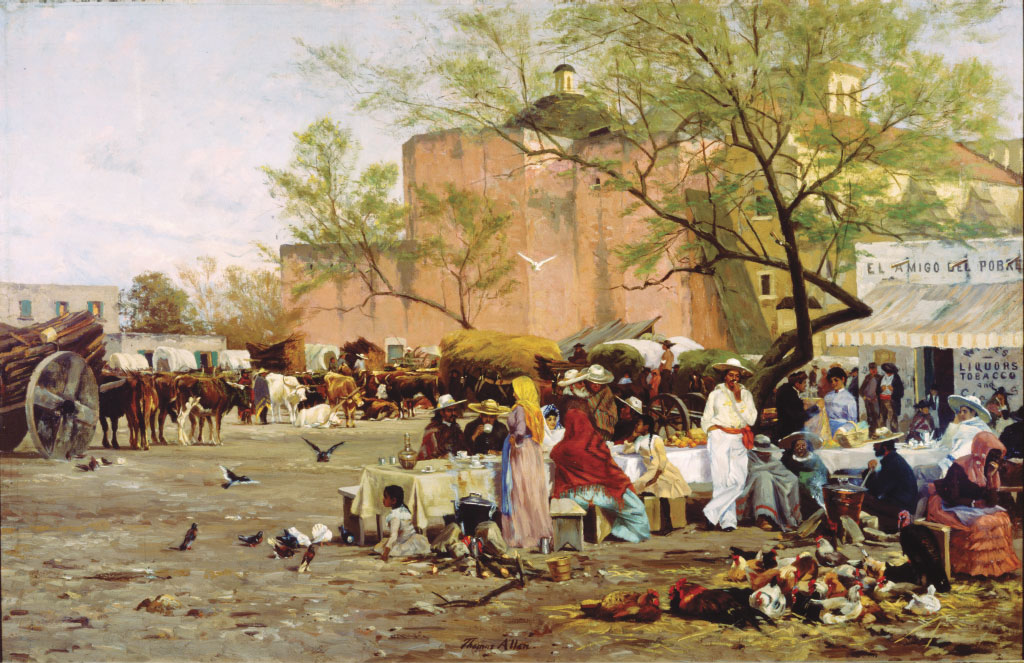Military Plaza (Plaza de Armas) was east of the creek. It was a lively outdoor market where vendors gathered to sell most anything: wool, hides, even caged birds. But perhaps the most famous attraction was the spicy concoction known as chili con carne that was served up with flamboyant style by women known as “chili queens.”
West of San Pedro Creek, another market was established on land that was called Paschal Square. Centuries later, that same site is still in use as a colorful marketplace. It’s known today as El Mercado (Market Square)—and people continue to flock to it for San Antonio-style food, shopping, and entertainment.
San Pedro Creek had always been an important crossroads for military expeditions and troops. First it was Spanish soldiers sent by the King of Spain. Then came the Texas patriots fighting for independence. So it should be no surprise that in the 1800s, the creek was connected to military activities. In 1854, for instance, the United States Army experimented with the use of camels in the arid lands of the Southwest. They temporarily stabled these “ships of the desert” in San Pedro Springs Park. Because of this use, quite a bit of damage was done to the park and springs. Later, during the American Civil War, Confederate troops camped near the springs where the creek originated and used today’s park as a prisoner-of-war camp.
Trade and shipping have had long associations with the creek. To the south, near downtown and along Laredo Street, teamsters congregated in camp yards along both sides of San Pedro Creek. It’s where they loaded their wagons with cotton and other goods destined for Mexico. According to Leonardo Garza, a descendant of the town’s early settlers, the greatest commerce seemed to have been the traffic from Port Lavaca on the Texas Gulf Coast, which brought all the goods for the stores. Those who worked in that industry camped along San Pedro Creek where they formed a little village. And San Pedro Creek kept on flowing right along—and started its next chapter that was set in The Old West.



